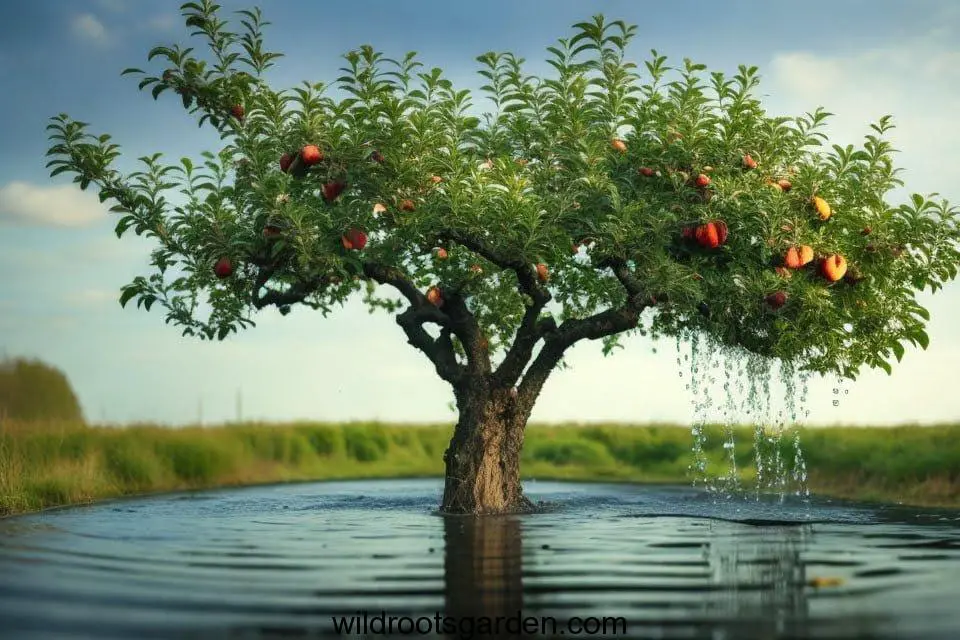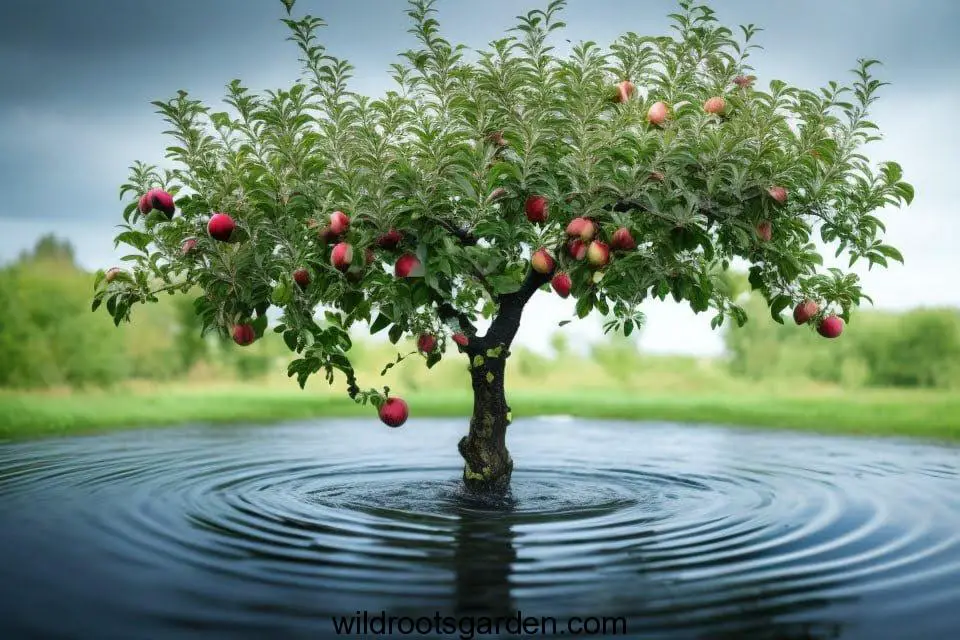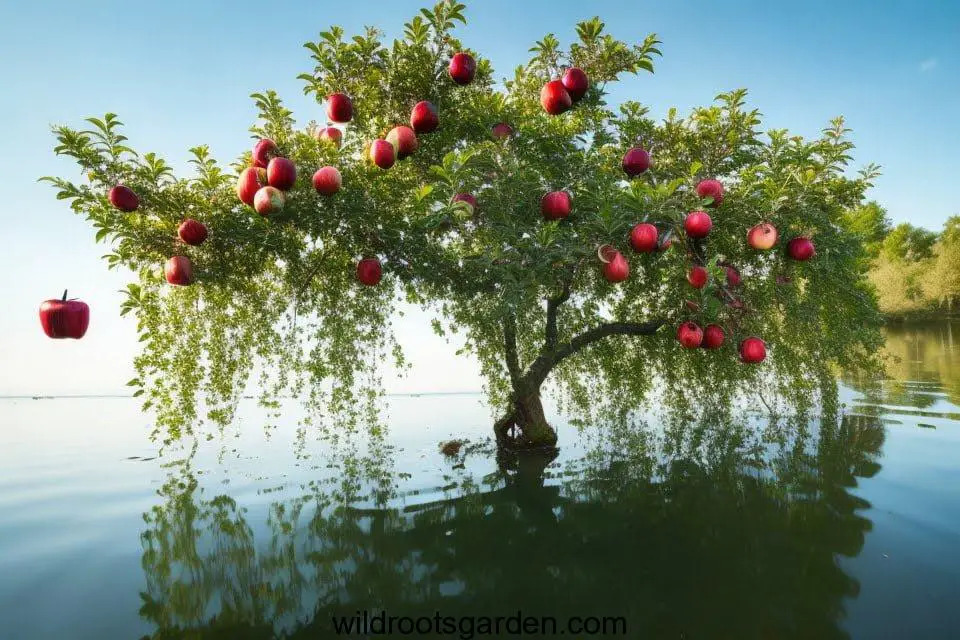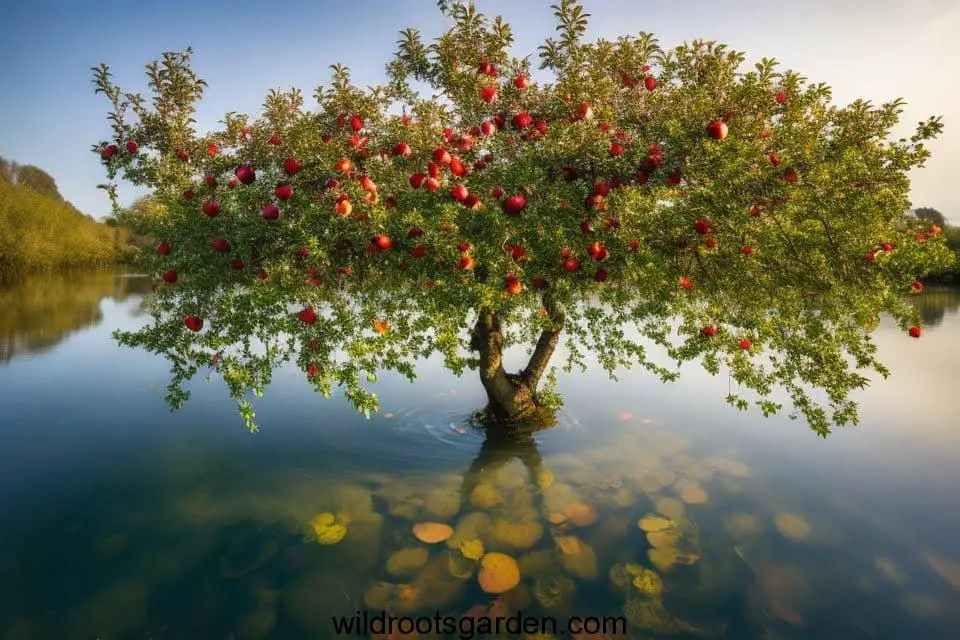Apple Tree Cuttings in Water. A time-honored horticultural technique that enables devoted gardeners and orchard enthusiasts to easily reproduce their preferred apple tree varieties is the propagation of apple tree cuttings in water. In comparison to conventional nursery-bought seedlings, this method of propagation is more affordable and environmentally benign. Enthusiasts can unravel the mystery of plant growth and watch as delicate shoots develop into strong young trees by utilizing the natural power of cuttings and water. We will examine the crucial phases of apple tree multiplication in water throughout this complete tutorial, from choosing the best cuttings to raising them into healthy saplings. This manual gives both new and experienced gardeners the knowledge and confidence to set out, emphasizing the importance of appropriate scheduling, hygiene, and adequate environmental conditions.

Understanding Apple Tree Propagation
Cutting apple trees is a dependable and economical way to multiply them. It entails removing a stem or branch from an established apple tree and promoting root development. By using this method, you can produce apple trees that are genetically similar and carry along the beneficial characteristics of the parent tree.
Selecting the Right Time for Taking Cuttings
Proper cutting timing is essential for effective propagation. Before the tree begins to bud, late winter or early spring, is the best time to take apple tree cuttings. The tree is dormant at this time, which increases the likelihood that the cuttings will successfully take root.
Gathering the Necessary Materials
Before you begin the propagation process, gather the following materials:
- Pruning shears or a sharp knife
- Rooting hormone (optional)
- Clean, sterilized containers
- Distilled or filtered water
- Plastic bags or a humidity dome

Preparing the Cuttings
To prepare the cuttings, follow these steps:
- Select healthy, disease-free branches that are approximately pencil-thick in diameter.
- Cut the branches into 6-8 inch lengths, making clean cuts just below a bud or node.
- Remove any leaves from the lower half of the cutting, leaving a few at the top.
- If desired, dip the bottom end of the cutting into the rooting hormone to encourage root development.
Rooting Apple Tree Cuttings in Water
Now it’s time to root the apple tree cuttings in water. Here’s how:
- Fill a clean container with distilled or filtered water.
- Place the cuttings into the water, ensuring that the bottom ends are submerged.
- Position the container in a warm and bright location, away from direct sunlight.
- Change the water every few days to keep it fresh and oxygenated.
- After a few weeks, you should start seeing roots forming from the bottom of the cuttings.
Transplanting Rooted Cuttings
Once the cuttings have developed a good root system, they are ready to be transplanted into soil. Follow these steps:
- Prepare a planting site with well-draining soil and sufficient sunlight.
- Dig a hole deep enough to accommodate the roots of the cutting.
- Gently remove the cutting from the water, being careful not to damage the delicate roots.
- Place the cutting in the hole and backfill with soil, ensuring that the roots are covered.
- Water the newly transplanted cutting thoroughly and provide regular irrigation as needed.
Caring for Young Apple Trees
To ensure the healthy growth of your young apple trees, consider the following care tips:
- Provide regular watering, especially during dry spells.
- Apply organic mulch around the base of the tree to retain moisture and suppress weeds.
- Fertilize the tree annually with a balanced organic fertilizer.
- Prune the tree to promote proper shape and structure.
- Monitor for pests and diseases, and take appropriate measures if necessary.

Pruning and Training the Trees
Pruning plays a crucial role in shaping apple trees and optimizing fruit production. Here are some pruning and training tips:
- Prune during the dormant season to remove dead, damaged, or crossing branches.
- Train the tree to a central leader or open-center system, depending on your preference.
- Encourage proper spacing between branches for optimal light penetration and air circulation.
- Regularly remove suckers and water sprouts to maintain a healthy tree structure.
Protecting Apple Trees from Pests and Diseases
Apple trees are susceptible to various pests and diseases. Here’s how you can protect your trees:
- Monitor regularly for signs of pests such as aphids, apple maggots, and codling moths.
- Use organic pest control methods whenever possible, such as introducing beneficial insects.
- Practice good sanitation by removing fallen leaves and fruits to prevent disease spread.
- Consider applying organic fungicides or pesticides if pest or disease pressure is high.
Harvesting the Fruits
Harvesting luscious fruits from apple trees is the greatest reward. Depending on the apple variety and locale, harvesting periods may change. In general, apples are ready to be picked when they are firm, fully colored, and can be gently twisted away from the tree. Appreciate what you’ve worked so hard for!
Common Issues and Troubleshooting
- Issue 1: The cuttings are not rooting.
- Solution: Ensure that the cuttings are from healthy trees and provide adequate warmth and moisture during the rooting process.
- Issue 2: The leaves of the young apple tree are turning yellow.
- Solution: Check for overwatering, nutrient deficiencies, or soil pH imbalances, and adjust accordingly.
- Issue 3: The apple tree is not producing fruits.
- Solution: Lack of pollination, improper pruning, or nutrient deficiencies may be causing this issue. Assess and address these factors accordingly.
***In conclusion, propagating apple tree cuttings in water offers a rewarding and fulfilling experience for horticulture enthusiasts and nature lovers alike. By following the steps outlined in this guide, you can harness the natural regenerative potential of these cuttings, witnessing the marvel of new life taking root. From carefully selecting healthy cuttings to providing the right nurturing environment, each stage of the process contributes to the success of your propagation endeavor.
You’ll gain a greater understanding of the miracles of plant growth as your cuttings grow into sturdy saplings. Keep in mind that nurturing strong, healthy apple trees that will give fruit for many generations requires patience and constant attention.
Therefore go out with enthusiasm and confidence, and let the age-old practice of apple tree water propagation inspire your green thumb. You’ll soon be surrounded by a flourishing orchard of your own design, a monument to your perseverance and love of nature. Happy breeding!
FAQs (Frequently Asked Questions)
Q1: Can I use any type of apple tree cuttings for propagation?
Yes, you can use cuttings from various apple tree varieties as long as they are healthy and disease-free.
Q2: How long does it take for apple tree cuttings to root in water?
On average, it takes a few weeks to a couple of months for apple tree cuttings to develop roots in water.
Q3: Do I need to use rooting hormone for apple tree cuttings?
Using rooting hormone is optional but can enhance the chances of successful rooting.
Q4: When is the best time to transplant the rooted apple tree cuttings into the soil?
Transplant the rooted cuttings into the soil after the root system has developed and the weather is suitable for planting.
Q5: How long does it take for apple trees to bear fruits?
Depending on the apple variety and growing conditions, apple trees typically start bearing fruits within 3 to 5 years after planting.

